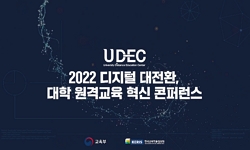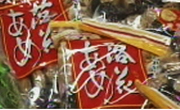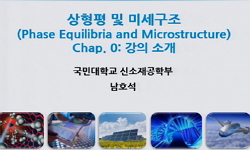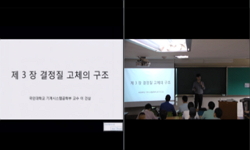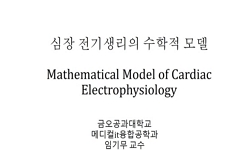미세균열이 생기기 전 $80^{\circ}C$ 물속에서 침수시간에 따른 $Avimid^(R)$ K3B/IM7 복합재의 습기노화 현상에 관하여 연구하였다. $80^{\circ}C$ 물속에서 복합재의 파괴인성을 저하시키는 요인으로는...
http://chineseinput.net/에서 pinyin(병음)방식으로 중국어를 변환할 수 있습니다.
변환된 중국어를 복사하여 사용하시면 됩니다.
- 中文 을 입력하시려면 zhongwen을 입력하시고 space를누르시면됩니다.
- 北京 을 입력하시려면 beijing을 입력하시고 space를 누르시면 됩니다.
https://www.riss.kr/link?id=A106678234
- 저자
- 발행기관
- 학술지명
- 권호사항
-
발행연도
2005
-
작성언어
English
-
주제어
수분노화 ; 미세균열 파괴인성 강도 ; 확산
-
등재정보
KCI등재
-
자료형태
학술저널
-
수록면
23-30(8쪽)
- 제공처
- 소장기관
-
0
상세조회 -
0
다운로드
부가정보
국문 초록 (Abstract)
미세균열이 생기기 전 $80^{\circ}C$ 물속에서 침수시간에 따른 $Avimid^(R)$ K3B/IM7 복합재의 습기노화 현상에 관하여 연구하였다. $80^{\circ}C$ 물속에서 복합재의 파괴인성을 저하시키는 요인으로는 수지 파괴인성의 저하나 잔류응력의 변화 그리고 섬유와 수지 사이의 계면 손상이다. $80^{\circ}C$ 물속에서 수지에 습기가 포화되는 시간은 500 시간이며 K3B/IM7복합재에 습기가 포화되는 시간은 100 시간이다. 수지가 500 시간 가속노화한 후 DSC 시험을 한 결과 $T_g$는 1% 이내 증가하였으며, 무게는 $7\times10^{-6}m/s^2$ 확산속도로 1.55% 증가하였다. K3B/IM7복합재에 관하여 물속에서 100시간 지난 후 무게는 $1\times10^{-6}m/s^2$ 확산속도로 0.41% 증가했다. 500 시간 노화한 후 수지의 파괴인성은 41% 저하하였으며 100 시간 노화한 후 ${[+45/0/-45/90]}_s$ K3B/IM7 복합재의 미세균열 파괴인성은 43.8% 감소하였다. 그러므로 $80^{\circ}C$ 수분노화 시험에서 복합재 적층의 파괴인성을 감소시키는 주요 원인은 수지 파괴인성의 저하라고 할 수 있다.
다국어 초록 (Multilingual Abstract)
The Hygrothermal aging of the laminates of $Avimid^(R)$ K3B/IM7 in $80^{\circ}C$ water was studied as a function of immersion time prior to forming microcracks. The factors causing the $80^{\circ}C$ water to degradation of the laminates could be the d...
The Hygrothermal aging of the laminates of $Avimid^(R)$ K3B/IM7 in $80^{\circ}C$ water was studied as a function of immersion time prior to forming microcracks. The factors causing the $80^{\circ}C$ water to degradation of the laminates could be the degradation of the matrix toughness, the change in residual stresses or the interfacial damage between the fiber and the matrix. The times to saturation in $80^{\circ}C$ water for the laminates and for the neat resin were 100 hours and 500 hours. After 500 hours aging of the neat resin, the glass transition temperature was changed less than 1% by DSC test, and the weight gain was 1.55% increase with the diffusion coefficient $7\times10^{-6}m/s^2$ and the fracture toughness was decreased about 41%. After 100 hours fully saturated aging of the ${[+45/0/-45/90]}_s$ K3B/IM7 laminates in $80^{\circ}C$ water, the weight gain was 0.41% increase with the diffusion coefficient $1\times10^{-6}m/s^2$. In 100 hours, the loss of the fracture toughness of the laminates was 43.8% of the original toughness by the microcracking fracture toughness criterion. Therefore, the main factor to degrade the microcracking toughness of the laminates could be the degradation of the matrix fracture toughness.
동일학술지(권/호) 다른 논문
-
- 한국추진공학회
- 류철성(Chul-Sung Ryu)
- 2005
- KCI등재
-
- 한국추진공학회
- 김희태(Hui-Tae Kim)
- 2005
- KCI등재
-
로켓엔진 연소기에서 반파장 공명기의 음향감쇠에 관한 수치적 연구
- 한국추진공학회
- 손채훈(Chae Hoon Sohn)
- 2005
- KCI등재
-
마이크로 추력기 응용을 위한 과산화수소 촉매 분해 반응
- 한국추진공학회
- 안성용(Sungyong An)
- 2005
- KCI등재





 ScienceON
ScienceON
